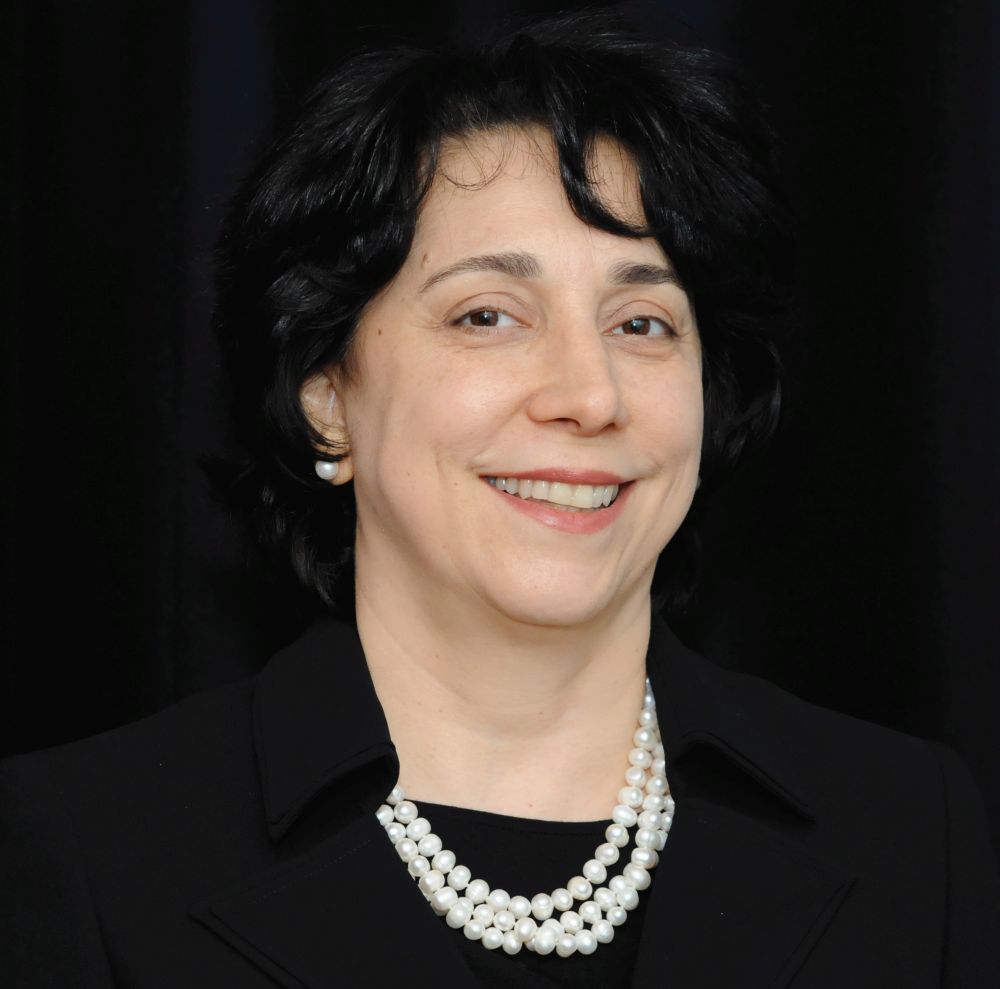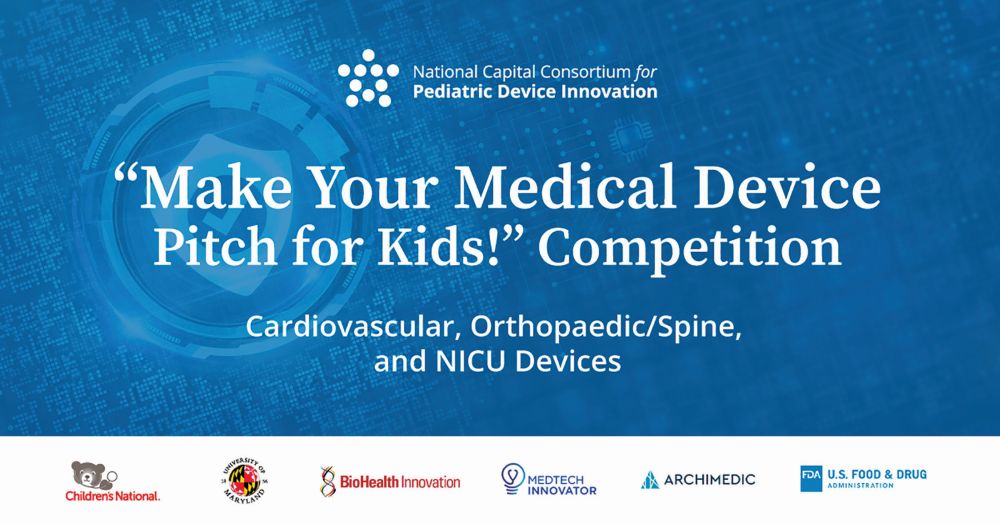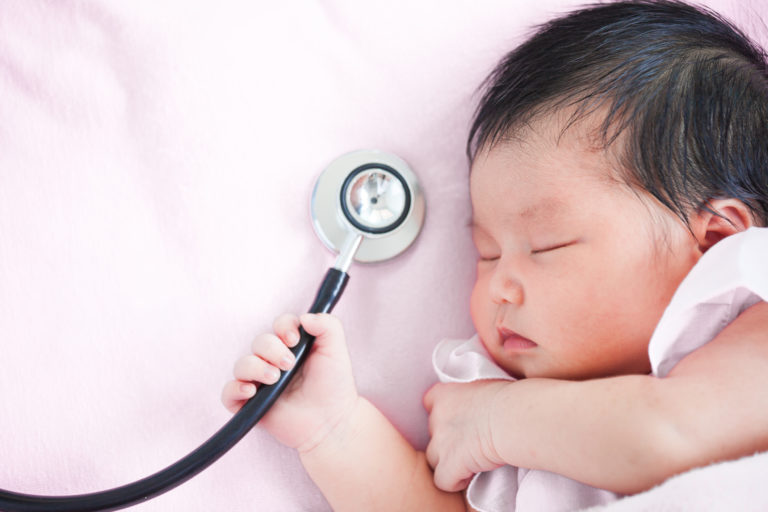In the last decade, only 24% of class III life-saving devices approved by the U.S. Food and Drug Administration (FDA) were for pediatric use—and most of those were for children over 12. Of these, less than 4% were labeled for pediatric patients ages 0–2 years old and the number of approved devices is even lower for neonatal patients. For these young patients, adult medical devices are often manipulated by pediatric specialists in order to provide stop-gap solutions. However, these repurposed devices are not always able to fulfill the unique needs of children’s biology and growth patterns.
Children’s National Hospital, located in Washington, D.C., in partnership with the National Capital Consortium for Pediatric Device Innovation (NCC-PDI), is working to change those statistics by supporting innovative solutions for pediatric devices. NCC-PDI is one of five consortia in the FDA’s Pediatric Device Consortia (PDC) Grant Program created to support the development and commercialization of medical devices for children and is led by the Sheikh Zayed Institute for Pediatric Surgical Innovation at Children’s National Hospital and the A. James Clark School of Engineering at the University of Maryland, with support from partners MedTech Innovator, BioHealth Innovation, and design firm Archimedic.
“Our goal is to provide direct funding [with] expert advising and support services to innovators of pediatric medical devices,” says Kolaleh Eskandanian, vice president and chief innovation officer at Children’s National Hospital and principal investigator of NCC-PDI (Figure 1). One of the unique aspects of this work at Children’s National is the investment in innovation, and a culture that supports that effort from the top down. “We embrace the recognition that innovative research has to be coupled with a product development mindset for the translation of great ideas to the market. Otherwise we would be left with papers and patent applications on the shelves. We don’t want to do that—we want more than that. We want to actually translate intellectual property as well as research into tangible products for children.”

Unfortunately, the market for pediatric medical devices is relatively small, which means that industry is often hesitant to invest research dollars into these types of devices when it boils down to financial viability. This gap in industry investment then triggers an unmet need for not only any medical products for children, but especially innovative devices that offer compelling designs to meet these patients’ special requirements. By creating a device competition and opening up the possibility of funding and support through grants and seed funding, the intent is to provide a catalyst to fill this need. “The notion that innovation follows investment, that really gave us the idea of competitions where if we announced a challenge and we could put grant money behind it—and open it to the entire world—then we could attract small businesses and start-up companies that could come forward and start thinking about developing a medical device more specifically for the pediatric population,” Eskandanian says.
Making it competitive
Since 2013, the “Make Your Medical Device Pitch for Kids!” international competition has focused annually on identifying and supporting innovations that will make a significant improvement in pediatric care. A special edition of the competition held in July 2020 focused exclusively on COVID-19 solutions for pediatric care. The winners of the COVID-19 edition of the competition included Bloom Standard (Kaaria), for a wearable, AI-driven ultrasound for infant cardiac and pulmonary screening; Clarity, a transparent reusable DIY origami facemask; Hopscotch, a gamified cognitive behavioral therapy-based computer exercise to engage kids to complete treatment programs; Medipines, a monitor device that displays critical respiratory parameters analyzed from a patient’s breathing sample; OtoPhoto, a smart otoscope that quickly and accurately aids diagnosis of ear infections for home telehealth use; TGV-Dx, a novel, phenotype-based test system for rapid selection of effective antibiotic regimen; Vitls, a wearable platform for remote patient monitoring of the vitals clinicians require to assess a patient; and X-Biomedical, with a rugged portable smart ICU ventilator for pediatric and adult patients.

The most recent competition called for proposals in areas of cardiovascular devices, orthopedic, and spine devices, as well as neonatal intensive care unit (NICU) devices, all areas of unmet need that are used heavily but underserved in the clinician’s toolbox (Figure 2). Winners were selected from an initial field of 30 semifinalists, which was then narrowed down to ten. These ten innovators had access to a new pediatric accelerator program in conjunction with MedTech Innovator—the largest accelerator of medical devices in the world—combined with support from Children’s National Hospital clinicians. They then competed for a share of
US$ 250,000 in FDA-funded grants during a September 2020 pitch competition.
The six pediatric device awardees included Adipomics, for COVID-SPOT, a one-step COVID-19 diagnosis on the spot; BioSense, which developed a flexible, noncontact EKG system for constant, noninvasive monitoring for children; Innara Health, for development of a biofeedback device to help newborns and premature infants improve feeding readiness and promote the neuro and physiological aspects of feeding; Navi Medical Technologies for Neonav, a noninvasive device that provides real-time feedback of central line ECG tip location; Novonate for LifeBubble, which secures and protects the umbilical catheter insertion site for neonates in intensive care; and Renata Medical, for design of an adjustable growth stent for treatment of congenital narrowed lesions in neonatal patients.
“Each year we raise the bar and try to challenge ourselves. The most recent competitions were different because we worked with our partners at MedTech Innovator to introduce the first pediatric device accelerator program,” Eskandanian says. In prior years, “we saw that when we wanted to introduce our companies in the pediatric market, they found themselves competing with companies in the adult domain. And because of that we decided to really make a change in how we’ve been doing things,” she adds. “Going through this process really transformed all of these companies, and in this way all ten were winners.”
Focusing on the challenges of designing and marketing pediatric devices alone can make a difference in success, especially after providing these innovators with a comprehensive “boot camp” where they were exposed to potential investors and also received regulatory consultations, among other support. By the time the winners were selected, the companies chosen “were really ready and polished in terms of their understanding of product development and having their regulatory and reimbursement strategies figured out,” Eskandanian says. “Some had already received initial funding in addition to showing potential for future funding,” which is one of the criteria for receiving the grant award. In fact, some of these products might eventually push out other market competition because of their flexibility—including the ability to grow with the patient. This is the case with Renata Medical’s stent, which can expand from 2 to 20 mm and can be used over a lifetime, possibly changing the recovery trajectory for not only the 40,000 children born with congenital heart disease, but for adult patients as well.
To date, NCC-PDI has mentored over 100 medical device sponsors to help advance their pediatric innovations, with seven devices having received either their FDA market clearance or CE marking.
A new campus
Another focus for supporting innovative pediatric health care is the first-of-its-kind, Children’s National Research and Innovation Campus, located on a nearly 12-acre portion of the former Walter Reed Army Medical Center campus in Washington, D.C. Currently under construction and expected to open in phases throughout 2021, the campus’ close proximity to federal research institutions and agencies, universities, academic research centers—combined with an on-site incubator space—is designed to foster a rich ecosystem of public and private partners that can help to bolster pediatric medical device innovation and commercialization.
“The entire campus is meant to be a work/live/play ecosystem and research and innovation is a big aspect. We want to create an environment where we are not only doing research for the sake of publications and grants but through partnership with industry and start-up companies we can most importantly add the ‘D’ in development to the ‘R’ in research,” says Eskandanian. “Research is what we understand very well today—we do great research. But this opportunity to create a pediatric research and innovation campus gives us an opportunity to translate these discoveries from the labs and research environments into products that can address an unmet need in the market, and eventually help children with novel technologies that are developed specifically for them.”
“We knew we couldn’t do this on our own,” she adds. “It’s not only about more space but public and private partnership.” Early in development, Children’s National partnered with Johnso & Johnson Innovation, LLC to launch JLABS at Washington, D.C. This unique lab emphasizes children’s and pediatric health by providing 32,000 square feet of state-of-the-art incubator space that can accommodate 30–40 pharmaceutical, medical device, consumer, and health technology companies. In addition, a partnership with Virginia Tech will support a biomedical research facility on the campus that focuses on pediatric neural oncology research.
As to the future of pediatric health care and devices, Eskandanian would like to see more skin in the game from larger medical technology companies to join in the quest for innovative pediatric health solutions, beginning by sponsoring future competitions that could help crowdsource ideas to solve a particular challenge. “There has to be a recognition that we need to shift the status quo and think a bit differently. Because technology is not the problem. When you bring smart engineers and couple them with smart clinicians, great things will happen. But it is about the types of incentives, in terms of both carrots and sticks, that we need and that would help us get to the next level,” she says.
When it comes to pediatric health care solutions, there is currently an open playing field, one where thinking small may provide eventual opportunities to scale big. “When I went to engineering school the field of bioengineering didn’t exist,” Eskandanian says. “In this challenging environment, whether we are solving a risky, big problem like implanting stents or rapidly developing PPE on demand, I really encourage those scientists and engineers who want to make a change in health care to think about the applications of medical devices in pediatric health care and work with clinicians to make a difference.”



